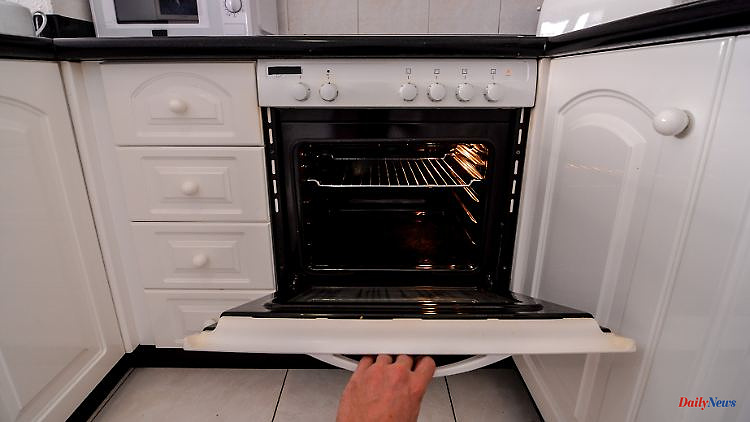Anyone who has ever cleaned their oven knows that it is hard work. A good alternative could be self-cleaning ovens. But cleaning doesn't work that well with these either, as the test by Stiftung Warentest shows.
The rolls in the morning, the casserole at noon or the pizza in the evening: such an oven is something beautiful. Only the cleaning often turns out to be a real struggle, especially if you have put it off for a relatively long time and now very old, burned-in dirt residues have to be removed.
An alternative are ovens with a pyrolysis function. Baking, roasting and grilling residues are decomposed to ash at temperatures of up to 500 degrees Celsius. In theory, this can be removed very easily with a cloth after the stove has cooled down. Stiftung Warentest tested eleven pyrolysis ovens. The result is rather disappointing.
Self-cleaning ovens are more expensive than conventional ones. The tested ovens with pyrolysis function cost between 465 and 1080 euros. Although the testers were satisfied with the baking performance, dirt often remained after the pyrolysis. And apart from that, according to the operating instructions, the owners of such ovens must also clean them manually before self-cleaning. So it's not as if all the work is done for you - even if the self-cleaning works well. As the test shows, this is not the case either, so you have to reach for the cleaning cloth twice. This is of course presented differently in advertising.
Another point of criticism from the testers was that many devices heat up extremely on the outer fronts. Up to 119 degrees Celsius were measured. This poses potential health risks from burning when touching the furnaces during pyrolysis. Especially families with children have to be careful here. The testers were particularly dissatisfied with the Beko oven, which received the worst overall rating ("poor"). Not only did the surfaces get very hot - there was also no warning on the outside of the device.
Since electricity and energy prices have risen enormously, many consumers are looking for energy-efficient devices when purchasing. The energy-saving mode is also used more frequently. But is that of any use in the case of ovens with a pyrolysis function? To do this, the testers ran one kilogram of roast pork in the normal program and in energy-saving mode. The results were relatively different. Although the Bauknecht oven consumed 330 watt hours less, it ran a total of 82 minutes longer than in the normal program. With Amica, on the other hand, it was 330 watt hours more in energy-saving mode, although the roast was cooked 22 minutes earlier. According to the testers, on average you save less than one cent per use if you set the energy-saving mode.
On the other hand, the oven from Samsung with the "Dual Cook Flex" door delivered a better result in terms of energy saving. The cooking chamber and the door can be divided here so that food can be baked separately. It is also possible to use only the upper or lower cooking compartment for baking. According to the testers, you can actually save some time and energy this way, but you have to use the oven as often to make it worthwhile. The device from Samsung costs a whopping 820 euros.
Three ovens delivered the best results in terms of baking and grilling. The Bosch HBG579BS0 oven (580 euros), the Constructa CF4M98062 oven (705 euros) and the Siemens HB578ABS0 oven (690 euros) received the overall rating of “good”.
According to the testers, if you are looking for a cheaper but still satisfactory device, you can use the Gorenje BPS6737E14BG model for 490 euros.












